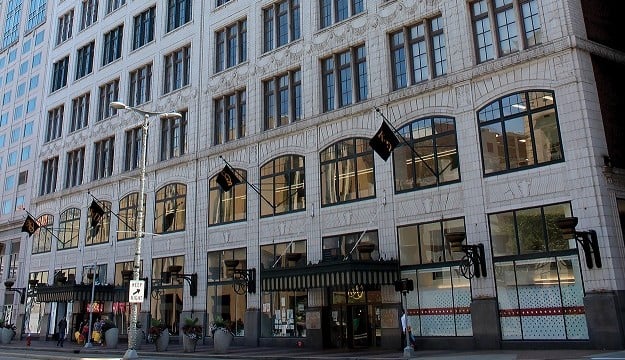APARTMENTS--Baby Boomers and their 20- to 34-year-old children, the so-called Echo Boomers--together the largest and fastest growing age group--are projected to comprise approximately 60% of the US population by 2010, and studies have shown they have a high propensity to rent apartments. New apartment construction will decline by close to 20% in 2001. Construction activity will be concentrated in the luxury, high-amenity and government-subsidized segments, as the increased cost of land, labor and materials--complicated by labor shortages, rising impact fees and worried lenders--make other product types economically unfeasible even in high-growth markets, according to the report.
Austin, Fort Lauderdale, Orange County, CA and the Inland Empire in California will see the most new construction in 2001, while Tampa and Orlando experience dramatic declines and Detroit, Newark, Miami, Houston, Philadelphia and Portland, OR remain somewhat stable. Rising vacancies are expected in Newark, Miami, Philadelphia, Orlando and Tampa, while lower vacancies are expected in Chicago, Detroit, Fort Lauderdale, Miami, Houston, Los Angeles, Manhattan, Orange County, CA and Portland, OR. The tightest markets will be the San Francisco Bay Area, Boston, Washington DC, Denver, Seattle, San Diego and Orange County. Total returns in the apartment sector are forecast to remain in the 11% to 12% range.
RETAIL--Tougher underwriting requirements, spiraling costs, a shortage of prime parcels and fears of overbuilding already have slowed retail construction in most major metropolitan areas. Nationwide, completions will be down 30% in 2001. Strong completion rates in Boston Chicago, Detroit, Las Vegas, Los Angeles and Philadelphia will be offset by lower output in other markets, according to the report. As usual, well-located, grocery-anchored centers, particularly with other tenants in place will remain relatively easy to finance.
National retail vacancy is forecast to inch upward from 7.7% in 2000 to around 8% in 2001. Construction will decline sharply overall, but in some markets the damage already has been done. High vacancy markets in 2001 will include Charlotte, Dallas/Ft. Worth, Orlando, Riverside-San Bernardino, CA Tampa and Tucson. Rents will not rise significantly nationwide, but above average rent growth is expected in the San Francisco Bay Area, Manhattan, Detroit, Portland, Boston and Denver.
OFFICE--Between concerns about the economy and the tech sector, office construction starts are expected to drop 14.5% in 2001 after declining only slightly in 2000--to 198.9 million sf. Boston, Chicago, Seattle and Washington, DC will have a large volume of office space added to existing inventory, but only because particularly strong demand in these markets is expected to head-off an oversupply. Nationwide, office square footage entering the market in 2001 is forecast to rise by just 1.7%.
Pent-up demand for space kept vacancies low as the first wave of sublease space hit the market late last year. As the economy continues to slow, however, the second and third wave of sublease space is expected to flood some markets. Vacancies in San Francisco, San Jose, Boston, New York, West Los Angeles and Washington DC should remain tight regardless, though rent growth generally will soften. High-vacancy markets will include Dallas, Riverside, CA, Las Vegas, Fort Lauderdale and Atlanta. Vacancy declines will occur in some secondary markets as high-tech firms seek larger lots and lower lease rates.
© Touchpoint Markets, All Rights Reserved. Request academic re-use from www.copyright.com. All other uses, submit a request to [email protected]. For more inforrmation visit Asset & Logo Licensing.






